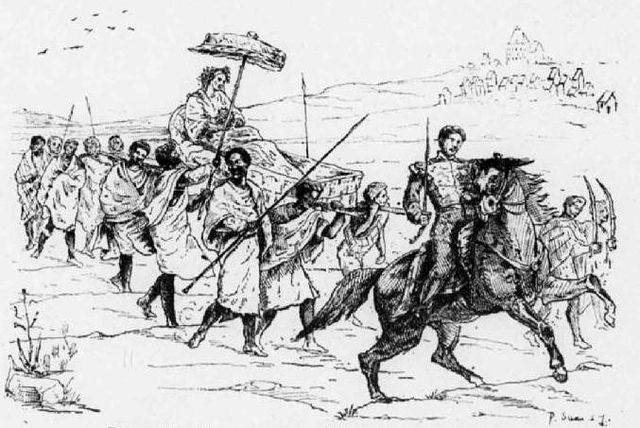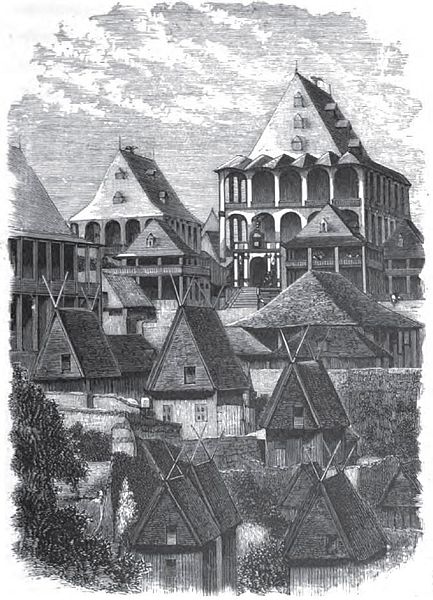Ranavalona I, also known as Ranavalo-Manjaka I and the “Mad Monarch of Madagascar” was sovereign of the Kingdom of Madagascar from 1828 to 1861. After positioning herself as queen following the death of her young husband, Radama I, Ranavalona pursued a policy of isolationism and self-sufficiency, reducing economic and political ties with European powers, repelling a French attack on the coastal town of Foulpointe, and taking vigorous measures to eradicate the small but growing Malagasy Christian movement initiated under Radama I by members of the London Missionary Society.
Ranavalona I
Queen Ranavalona I with her son and heir Prince Rakoto
Ranavalona traveling on her filanzana (palanquin), accompanied by her son Rakoto on horseback and a retinue of slaves and soldiers
Ranavalona built the largest structure in the Rova compound of Antananarivo, a wooden palace (upper right) called Manjakamiadana, which was later encased in stone under Ranavalona II.
The Kingdom of Merina, or Kingdom of Madagascar, officially the Kingdom of Imerina, was a pre-colonial state off the coast of Southeast Africa that, by the 18th century, dominated most of what is now Madagascar. It spread outward from Imerina, the Central Highlands region primarily inhabited by the Merina ethnic group with a spiritual capital at Ambohimanga and a political capital 24 km (15 mi) west at Antananarivo, currently the seat of government for the modern state of Madagascar. The Merina kings and queens who ruled over greater Madagascar in the 19th century were the descendants of a long line of hereditary Merina royalty originating with Andriamanelo, who is traditionally credited with founding Imerina in 1540.
Andriamanelo waged war against the Vazimba in an effort to expel them from the highlands.
King Andrianampoinimerina (ca. 1787–1810)
Ranavalona III was the last monarch of Madagascar.
Landing of the 40th Battaillon de Chasseur à Pieds in Majunga, between 5 and 24 May 1895.








